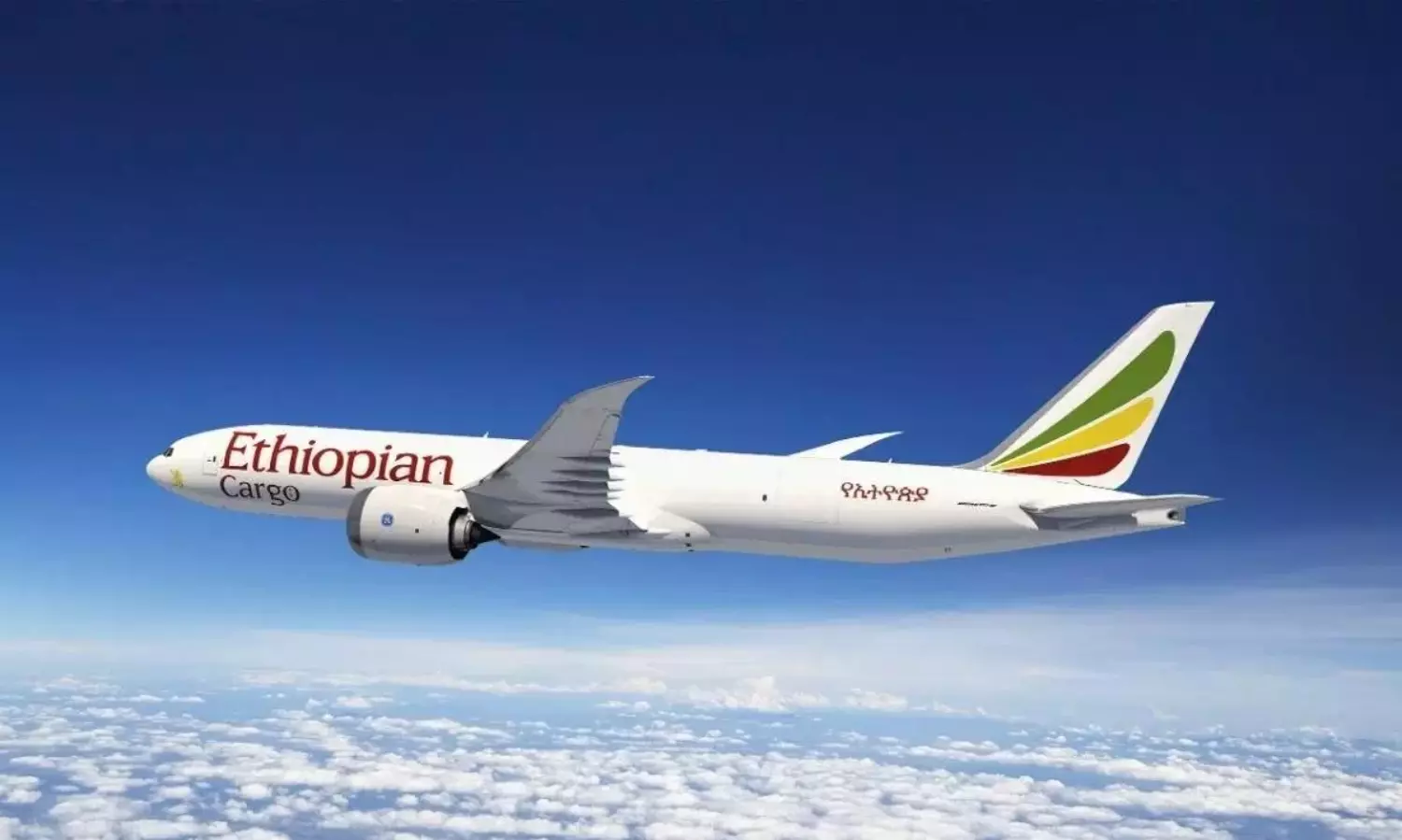SAATM - Huge potential, major challenges
African air space offers huge opportunities & policies like SAATM are many but what's clearly lacking is implementation

The Single African Air Transport Market (SAATM), as a concept, was launched more than five years ago to enhance air connectivity across the continent, inducing competition and job creations.
Africa today accounts for under two percent of air cargo traffic globally but with over a billion people, the share of African cargo traffic should increase with a fully operational single African air transport market.
"Policy levers including SAATM can create fertile ground for the African air cargo industry to continue and even increase its rate of growth through improved regional connectivity as well as with markets in other regions," Cortney Robinson, Air Transport Officer (air cargo), International Civil Aviation Organization (ICAO) told The STAT Trade Times in an earlier interview.
The SAATM Project Implementation Plan (PIP) designates specific activities and roles (example - SAATM Ambassador) for industry stakeholders to facilitate consultation. "Over the next two years and beyond, African air cargo stakeholders should actively participate in SAATM PIP workshops and other activities," says Robinson.

Privatisation needs to be seriously looked at – clearly, state-run airlines in some countries have accomplished little if not nil – so let’s learn and make tangible changes: Issa S Baluch
Issa S Baluch, Dean's Council, Harvard Kennedy School & Senior Advanced Leadership Fellow - Harvard University, adds that the idea of SAATM is not without precedence. "It comes on the back of the Yamoussoukro Decision (YD*) of 1999, and is effectively the vehicle for implementation of the 1999 agreement. As the African Union (AU) strategic vision takes us into 2063, some of us may not see any tangible changes in our lifetime. without the appropriate tailwind, we still have a 40-year timespan to make attempts at implementation of SAATM. Thus far, about 34 countries have ratified SAATM. The implementation of SAATM will take its own time and slow improvements.
(*Yamoussoukro Decision is a treaty adopted by most members of the AU to establish a framework for the liberalisation of air transport between African countries).
"My own reasons for this gradual process are that Africans are excellent in devising & planning while execution is a different ball game altogether. Execution requires interaction with the private sector. Freight logistics providers would like to see greater private sector participation in transport operations and service provision. Even if privatisation is not the immediate solution, state-owned enterprises should do their best to create commercially-minded operations that take advantage of the private sector’s best practices. I have seen or heard of very little progress in that area."
One key challenge is the government's will to sign-up and operationalise SAATM, says Maureen Kahonge, Senior Manager, Business Development & Communications, African Airlines Association (AFRAA). "A continental study on the benefits of SAATM, commissioned by the African Union Commission in 2020, revealed that out of 607 Bilateral Air Service Agreements (BASAs) that were reviewed, only 235 (39 percent) were YD* compliant while 372 (61 percent) were non-compliant. The situation of non-compliant BASAs continues to slow down implementation among SAATM states.
"Another setback has been the progress towards the finalisation of the institutional and regulatory texts. Connectivity improvement requires regulatory and policy framework on air transport liberalisation. Liberalisation calls for a harmonised regulatory and policy instruments in order to succeed. In 2022, the pending texts i.e. the Dispute Settlement Mechanism, the African Civil Aviation Policy and the Policy Guidelines for negotiating Air Services Agreements between the African States and other Non-African States and Regions were finalised and approved.
"The effective implementation of SAATM is one of the five projects under the landmark laboratory that was led by AFRAA to address the root cause of challenges facing the air transport industry in Africa and develop relevant solutions to revamp the sector. The lab brought together the air transport, trade, and tourism industries’ stakeholders from June 27 to July 1, 2022, at the AFRAA headquarters in Nairobi, Kenya, and developed a roadmap for the sustainability of the African air transport industry.
"Under the lab’s SAATM roadmap, one of the targets is to adopt the approach to implement SAATM within the Regional Economic Communities (RECs). The East African Community is the pilot REC for SAATM implementation.
SAATM implementation challenges
Countries that have ratified are unable to advance, says Baluch. "My guess is bureaucrats are still responsible and firmly in control. This can be termed as “a paper lion” – it is not a reality yet. We just saw a Kenyan freighter operator secure an Air Operator Certificate (AOC) in South Africa while both countries are SAATM members. What happened to the covenants of 5th freedom rights when South Africa, two other SADC members and eight Comesa members were ratifiers of SAATM? One would have thought there was no need for a Kenyan airline to penetrate the SADC region by securing another AOC, and that the merits of SAATM would be exposed further by utilising the so called 5th freedom rights which were talked about but that is clearly not the case here.”
SAATM benefits
"HUGE," says Baluch. "Increased service elements in much-underserved markets...increase in competition leading to better service elements. Let’s stress the situation – AfDB estimates that transport logistics in Africa can add around 75 percent to the cost of goods – the highest in the world compared to the west, which is around 10-15 percent. We need to unlock this area and be competitive by removing obstacles. To put it plainly, if we reduce the overhead costs for transport, we can compete where it matters most - in value addition of the goods and services we trade, therefore boosting returns to investors and businesses."

Implementation of SAATM will drive growth of intra-African trade and thus contribute to the growth of the African air cargo industry: Maureen Kahonge
Through liberalisation of African skies, the improvement in schedules, network and route development will ensure that existing and new operators will offer new routes, more frequencies, improved connections and lower fares, says Kahonge of AFRAA. "This will have the desired effect of market stimulation thereby increasing the number of passengers and tonnage of freight. The economies of the states that will have liberalised their skies will realise an increase in trade and GDP.
"SAATM and the African Continental Free Trade Area (AfCFTA) are two AUC flagship projects that are complementary in nature, and they will drive the development of intra-African air transport and trade. Together with associated logistics services, air transport services are essential for the development and optimal functioning of regional value chains envisaged under the AfCFTA. A well-functioning air transport service sector also delivers positive effects on intra-African passenger travel that is likely to spark growth in education, healthcare, and tourism services. However, intra-African trade has largely been constrained by the state of air transport services across the continent.
"Research shows that there is a positive outcome to the economies of the countries that liberalise their skies. With the implementation of SAATM, intra-African connectivity will develop and there will be more growth opportunities for African airlines. As a result, aviation’s role as an economic driver will grow significantly.
"For the East African community, for instance, according to the continental study commissioned by the AUC on the benefits of SAATM, the operationalisation of SAATM by the seven States will result in an increase of 2.8 million passengers per annum, $267.1 million in fare savings and $590.9 million increase in GDP."
African cargo industry - with/without SAATM
Trade and tourism support air transport, and efficient services generate additional tourism development, says Kahonge. "In liberalised markets across other regions in the world, intra-regional trade led to increased traffic. Trade and air transport have a symbiotic relationship and are closely linked. Air transport and trade sectors are modest within Africa. Policymakers and stakeholders need to work smartly to boost these sectors.
"A well-functioning air transport service sector also delivers positive effects on intra-African passenger travel that is likely to spark growth in education, healthcare, and tourism services. However, intra-African trade has largely been constrained by the state of air transport services across the continent. Implementation of SAATM will drive the growth of intra-African trade and thus contribute to the growth of the African air cargo industry.
"According to the United Nations Economic Commission for Africa (UNECA), the implementation of AfCFTA would double air cargo transport from 2.3 to 4.5 million tonnes. Air traffic is therefore expected to double in 2030 compared to 2019 with AfCFTA requiring 254 aircraft by 2030 and the estimated cost of required aircraft being estimated at $25 billion. The largest demand for aircraft to support the AfCFTA is within West Africa (13.5 percent). Demand from North to West Africa is 15.2 percent and within Southern Africa is 12.2 percent."
Without SAATM, it will be marginal, laments Baluch. "It is not a question of introducing policies and leaving them in one field – we need to implement by promoting and executing, by teaming up with the private sector. Privatisation needs to be seriously looked at – clearly, state-run airlines in some countries have accomplished little if not nil – so let’s learn and make tangible changes. The 1978 deregulation act in the U.S., followed by the open sky policy in the EU resulted in leapfrogging those economies. Such is the case of India in their open sky policies. And such can be the case for Africa as well, if SAATM is properly implemented."


